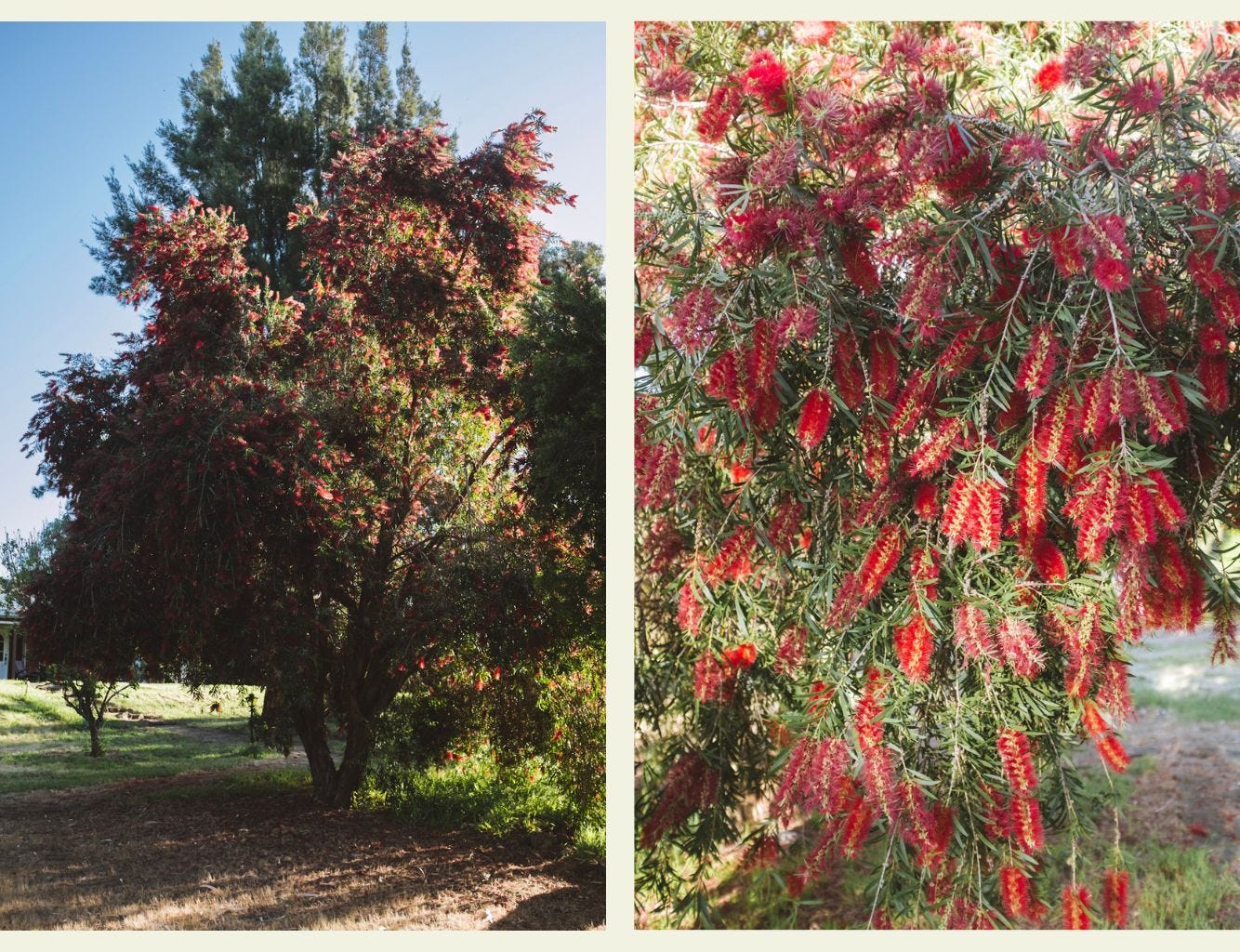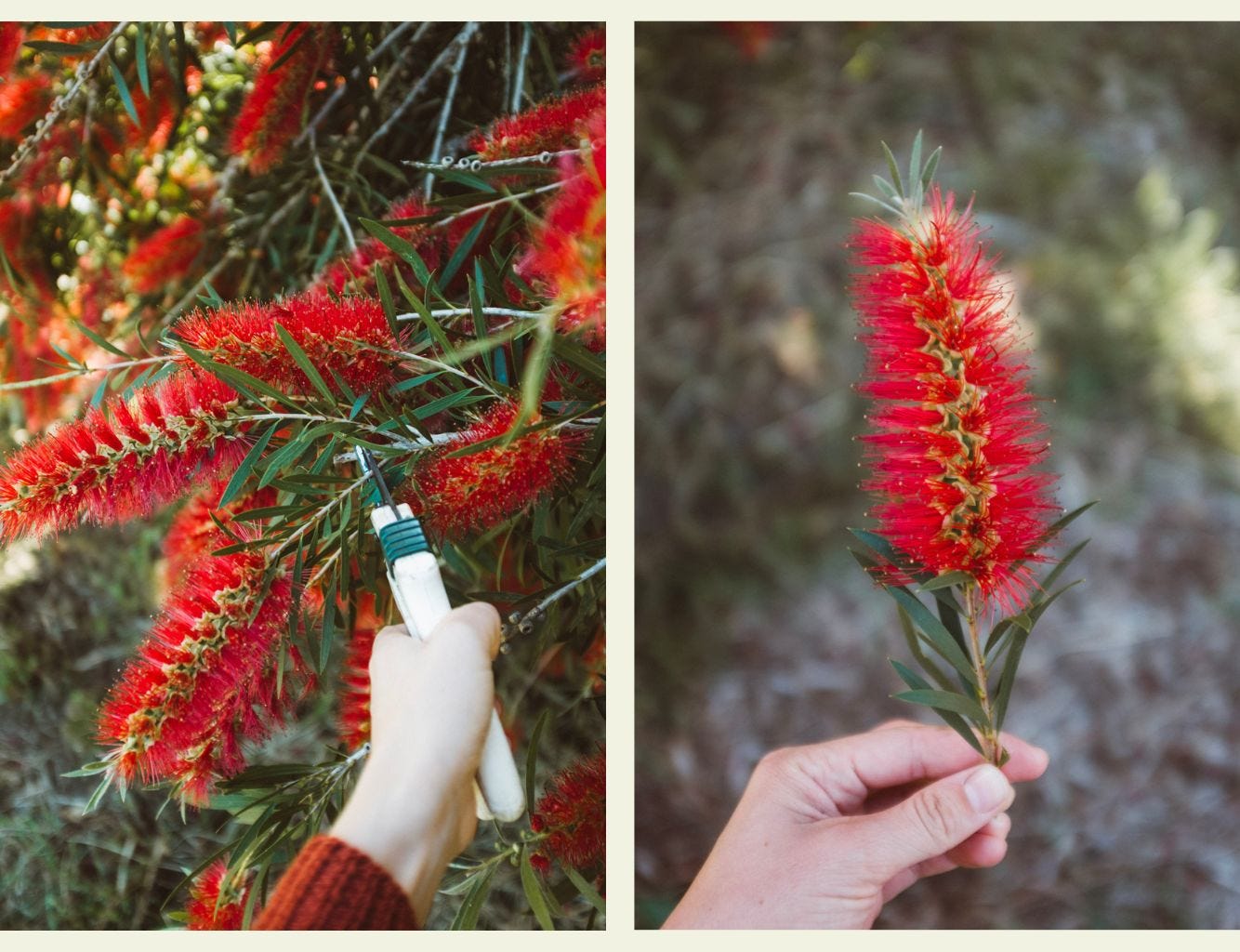Bottlebrush Tea
How to make this sweet, woody bush tucker tea that indigenous Australians used to treat gastrointestinal issues and skin conditions.
The bottlebrushes are flowering on my parents’ property at the moment. Great big blooming bushes and trees that are buzzing with bee activity.
There are a few types of bottlebrush on the property, but the most prolific are these large weeping bottlebrush trees (callistemon viminalis / myrtaceae viminalis) which produce dark red flower spikes. I say flower spikes because the recognisable bottle brush shaped blooms are actually made up of many little flowers.
(For those who care about botanical classification, there’s been a long debate about whether callistemon should actually be classified as myrtaceae. In many sources you’ll now find both callistemon and myrtaceae used or simply myrtaceae as the genus for what we know as bottlebrush.)
Bottlebrush bush tucker
Bottlebrush trees and shrubs are visually striking and for that alone I love them. As a bonus they’re also a source of nutrients and sweetness. When I was little, my mother taught me to stick my tongue on the nectar of the bottlebrush the way a bird would.
Until recently, I hadn’t realised you could also use the flowers and the leaves to make tea. It tastes sweet and woody, and like many native bush tucker plants it has some medicinal qualities too. Bottlebrush tea has long been used by indigenous Australians as an energy drink and also to treat gastro-intestinal issues and skin conditions.
Making bottlebrush tea
Bottlebrush tea can be made from the leaves or the flowers or a combination of both. If you don’t have a fresh source of bottlebrush available to you year round, you can also dry the leaves to store and use as you please.
Make sure your flowers and leaves are free from dirt, ants etc. but avoid washing the flowers otherwise you might remove some of the sweet nectar.
Chop the leaves up or simply add them whole to your teapot along with the flowers. I recommend starting with one flower spike and a handful of leaves per 500mL.
Pour in cold water and bring to boil over a low heat. Brew for 5-10 minutes or until you see the water changing to a golden or pinky colour. The longer you let it brew the more intense the colour gets and also the woodier the flavour.
Adjust the taste to your liking. Add more fresh flowers for a sweeter taste, or use another sweetener like honey. If there’s not enough flavour for your liking, add more leaves. If the flavour is too intense, just add more water.
Other ways to use bottlebrush
The more you dig, the more you discover. If you have an abundance of bottlebrush, try these other uses:
Insect repellent – crush the leaves onto your skin or put leaves near your bedding to keep bugs away.
Natural dye – use the stamens to dye natural fabrics like cotton, linen or wool in shades of brown to gold.
Flavouring – use the leaves in your stews, dessert sauces or as a marinade.
Essential oils, tinctures and extracts – explore the medicinal uses of bottlebrush.
Bottlebrush has been a spring favourite of mine this year. Most bottlebrush species only flower once a year, although some may have a second flush in autumn. In any case, the leaves are available year round which means if you have a tree near you, you can drink the bottlebrush tea all year long.
Peace, Melody
All photographs by me, 2023.








👋💗